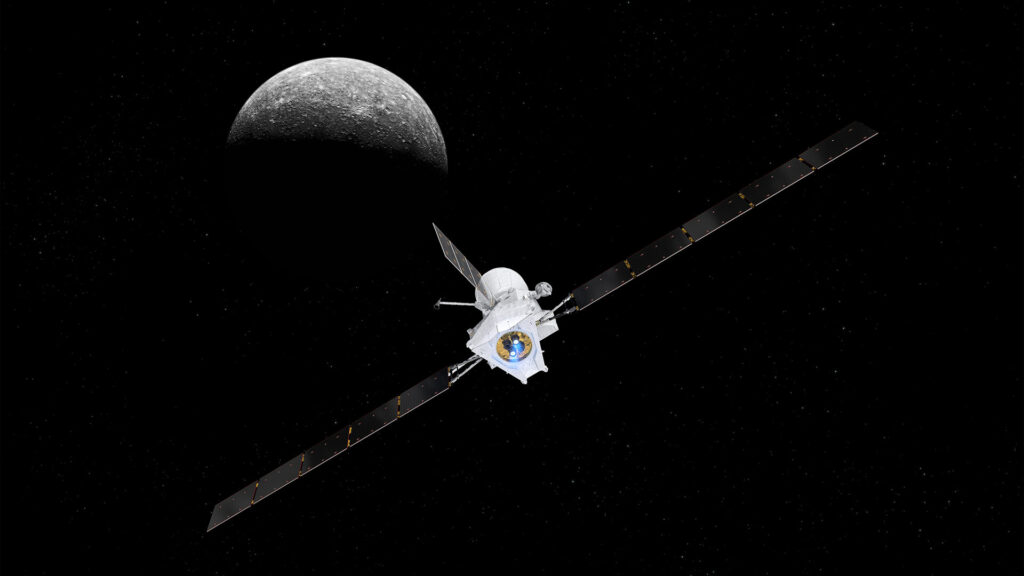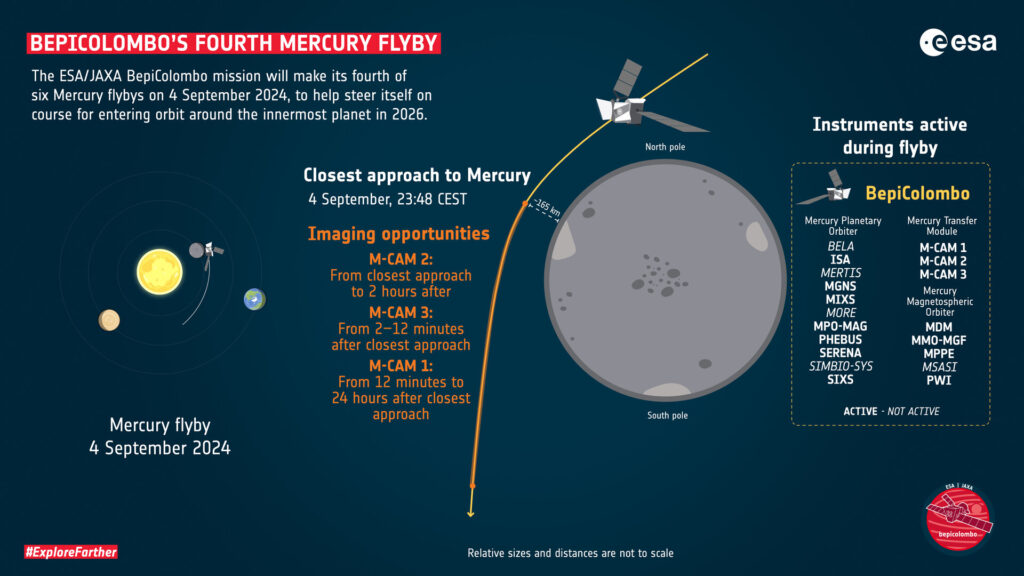The European Space Agency (ESA) had to change the trajectory of the BepiColombo mission, causing it to arrive at Mercury 11 months later than planned. The cause was problems with the engines of the MTM flight module.
Why is it so hard to get to Mercury
The BepiColombo mission was launched in 2018. Its target is the closest planet to the Sun — Mercury. The apparatus consists of three components: the MTM flyby module, the European probe MPO and the Japanese MTO. After arriving at Mercury, the bundle will separate. MPO will study the surface and internal structure of the planet, while MTO will make measurements of its magnetic field.

Unfortunately, getting to Mercury is not so easy. As it approaches the Sun, its powerful gravity accelerates the vehicle, preventing it from entering an orbit around the planet. To reduce this excess velocity, engineers have developed a complex trajectory involving nine gravitational maneuvers. These are necessary to brake the BepiColombo. The problem is that their implementation takes a long time. According to the original flight plan, BepiColombo was supposed to enter orbit around Mercury in December 2025, in other words, seven years after launch.
11 months late
To date, BepiColombo has performed six of the nine gravity maneuvers. The seventh will take place on September 4, when the spacecraft will again pass Mercury. But it’s not so simple. In April, ESA identified problems with the engines of the MTM flyby module. They stopped getting enough power to operate. Over time, engineers were able to restore thrust to 90% of the original. Unfortunately, this is still not enough to ensure that the original mission plan will be fulfilled and reach orbit around Mercury in December 2025.

As a result, mission controllers had to change the vehicle’s trajectory. To compensate for the lack of thrust, BepiColombo will pass just 165 kilometers from Mercury on September 4, 35 kilometers closer than previously planned. Fortunately, since the planet has almost no atmosphere, such a close approach carries no additional risks.
In October, BepiColombo will reactivate its engines and move to a new trajectory. In December 2024 and January 2025, it will perform two final gravity maneuvers that will ensure its arrival at Mercury in November 2026 — 11 months later than the original mission plan had anticipated.
Best view of Mercury
The change in arrival date to Mercury should not affect the BepiColombo science program. The upcoming flyby of the planets will be a kind of “teaser” of what we can expect from the mission. BepiColombo will take measurements of the magnetic field, plasma and particles. And the engineering cameras on board will take black-and-white pictures.

Since BepiColombo’s flight path passes directly over the planet’s South Pole, mission personnel are expecting some pretty spectacular images. They will show large craters, ridges, lava plains and more, helping scientists reveal the secrets of Mercury’s 4.6-billion-year history and its place in the evolution of the Solar System. The first images will be transmitted by BepiColombo a few hours after the approach and are expected to be released on September 5.
According to ESA


